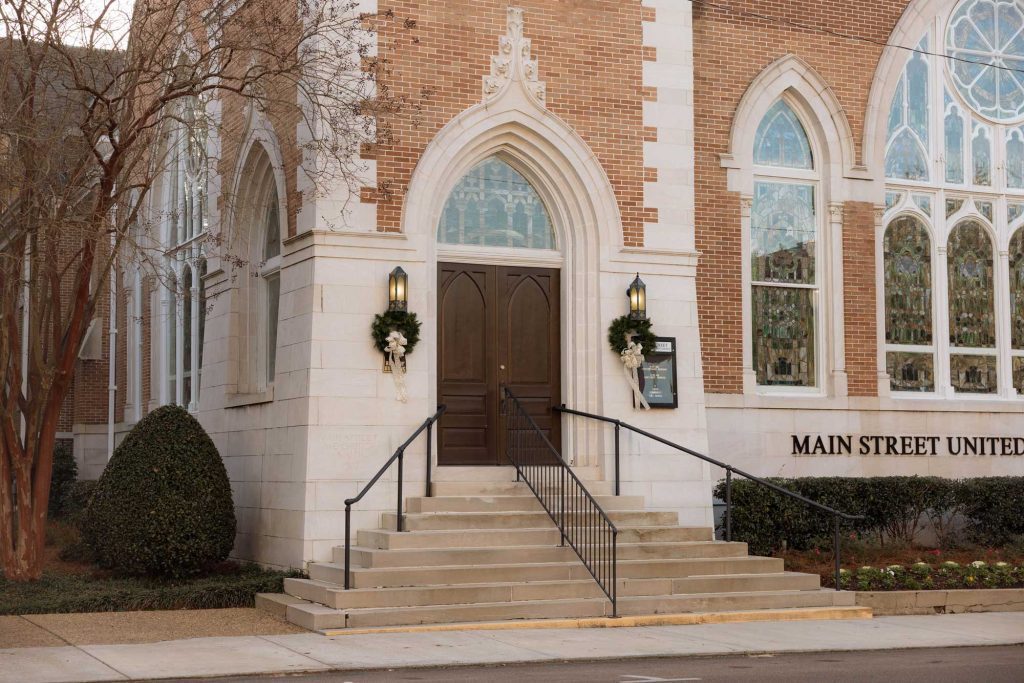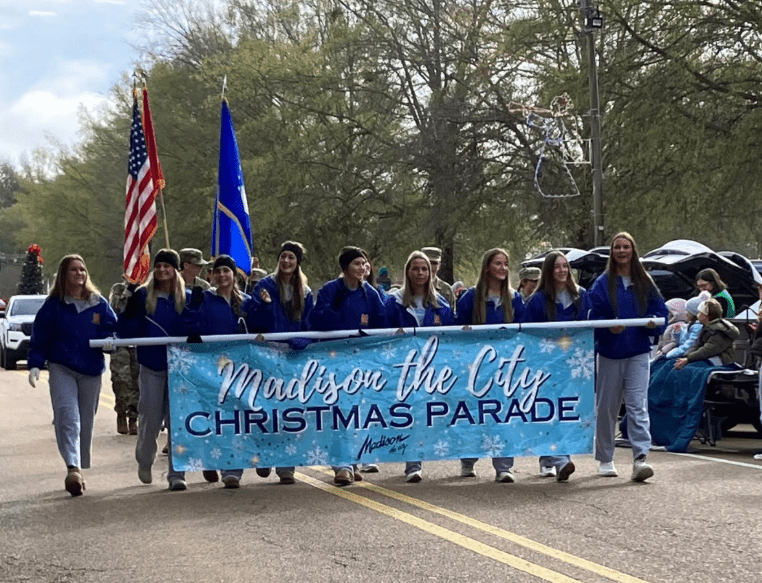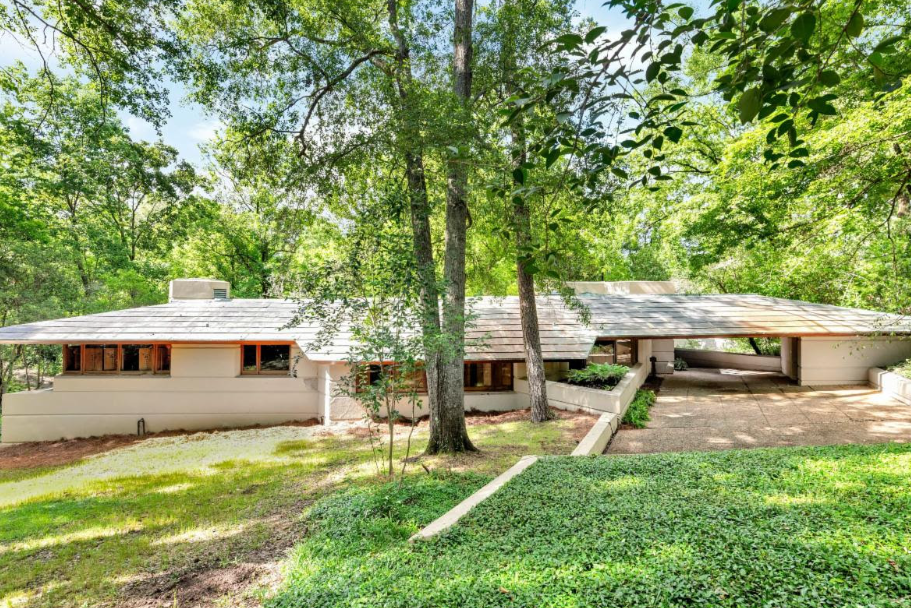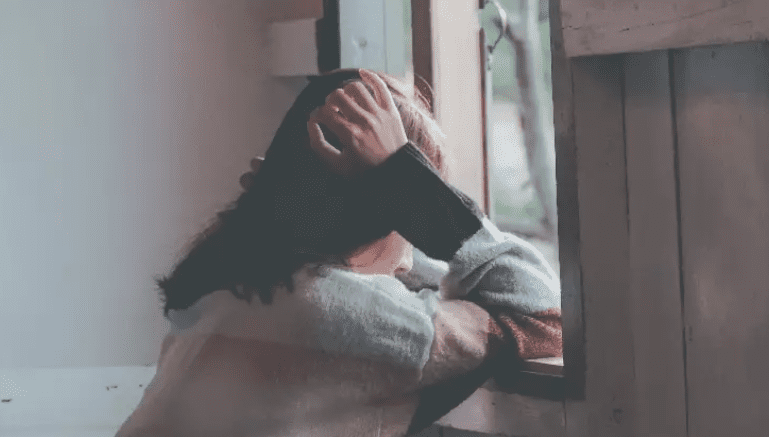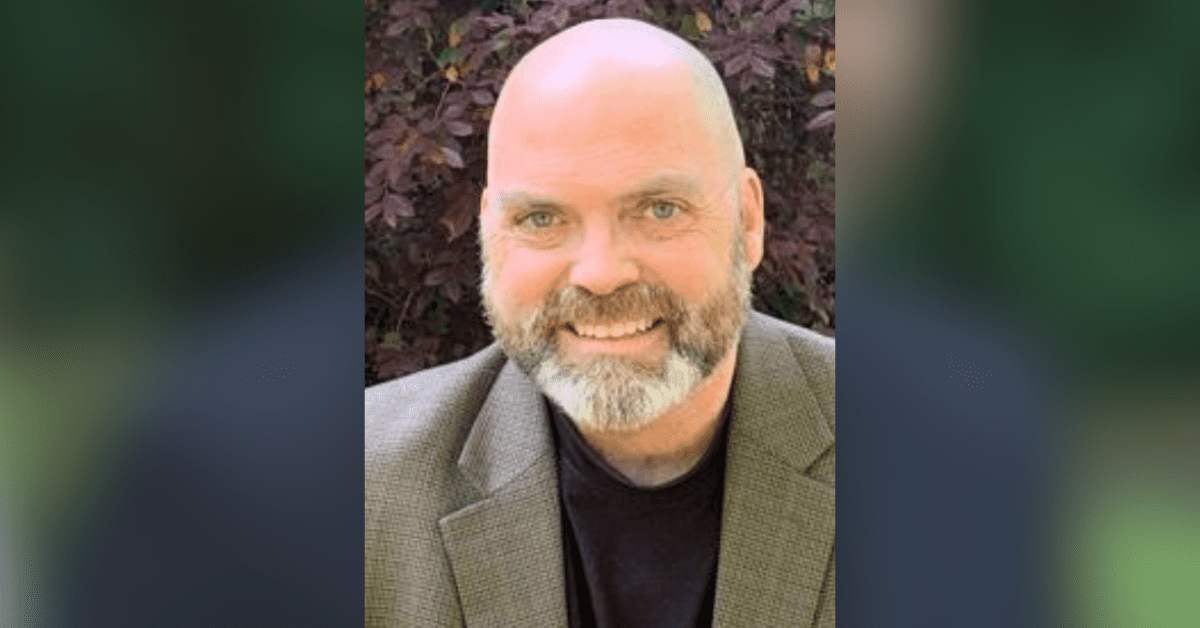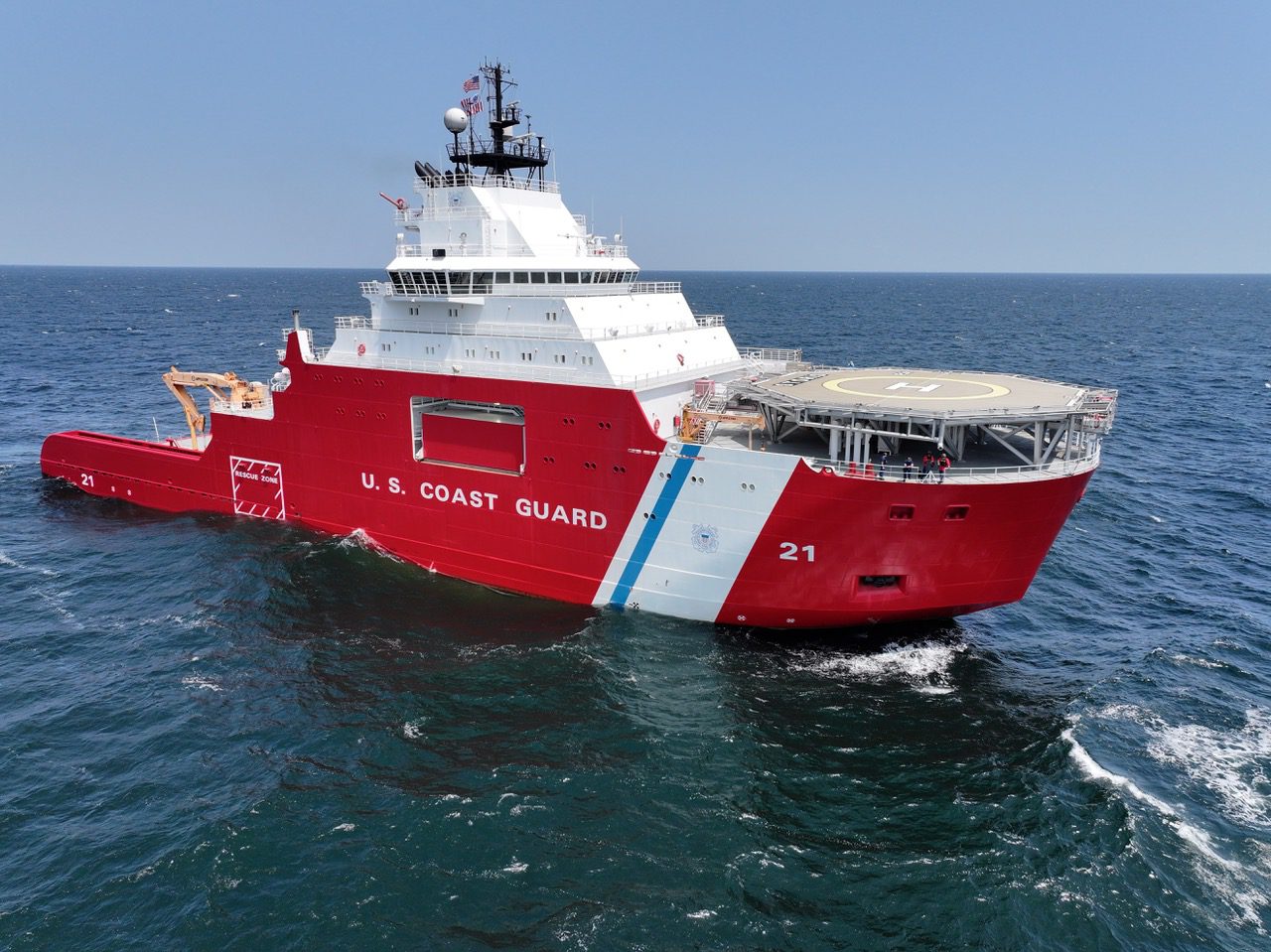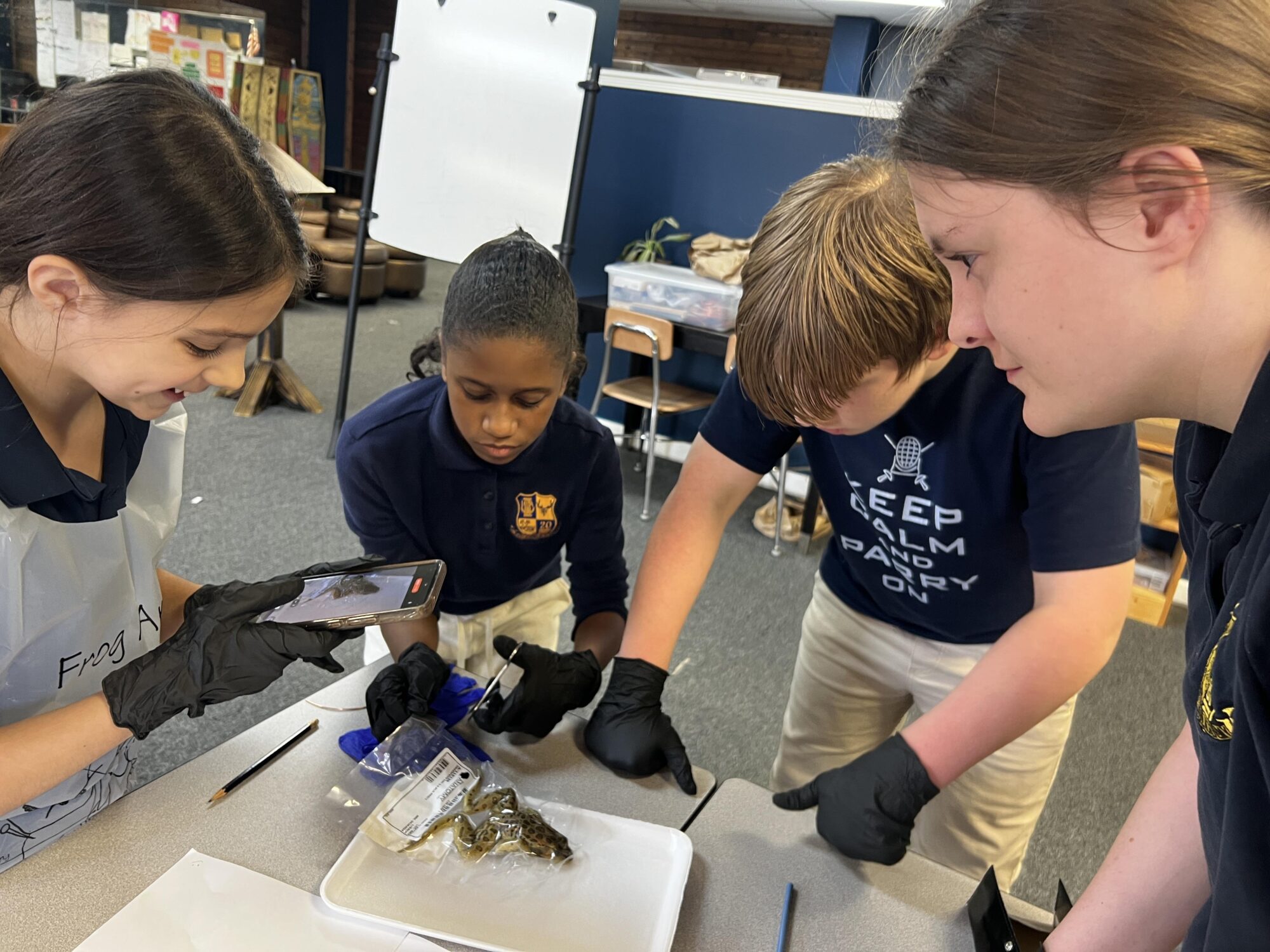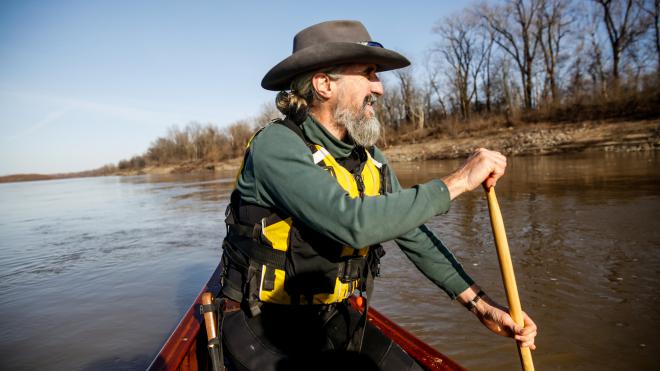
- Fascinated by things that don’t necessarily belong together becoming one, Ruskey’s paintings are a study of the unique contrasts, elements and colors he sees on the river.
Several years ago, while on a “Delta Detour” side trip for the Association of Food Journalist conference in Memphis, I met a character unlike any I’ve met in the Delta. John Ruskey is a local artist, canoe maker and river guide in Clarksdale. He gave us a tour of his business, Quapaw Canoe Company, a significant contributor to our local economy and the go-to recreational and culture-rich entity on the Mississippi River south of St. Louis. Magnolia Tribune contributor Phil Hardwick wrote about Ruskey recently when he was named Mississippi’s Small Business Person of the Year for 2024 by the Small Business Administration.
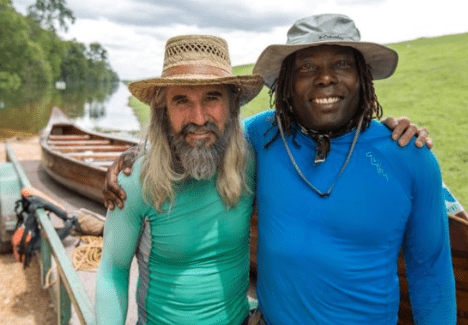
Ruskey and his river captains, Mark “River” Peoples and Braxton Barden, lead day trips and overnights on area rivers and run a renowned after-school apprentice program for Clarksdale-area youth, which focuses on canoe making, swimming, river guiding and life skills.
It is as if John Ruskey was born to be on the water. He thrives both near and on the Lower Mississippi River. He carves canoes, paints, and guides others into the wildest place remaining in the center of North America, the verdant floodplain of the country’s biggest river, which reaches fullness in the last thousand miles as it flows into the Gulf of Mexico.
A couple of years after first meeting him, I had an opportunity to interview Ruskey when he was preparing for an exhibit of his watercolors to be on display at the Mississippi RIver State Park Visitor Center. His work is created using water from the Mississippi River. A fabulous painter, Ruskey is chronicling mile-by-mile sections of the flora and fauna on the lower Mississippi River and the result is a collection of amazing artwork.
Growing up in the Colorado Rockies, Ruskey was mesmerized by the swirling, meandering lines rivers made on maps as a young boy.
“I’m the sixth generation of a long line of Coloradans,” says Ruskey. “I’ve always been a map lover, even as a kid. National Geographic was my opening to the world.”
In 1982, Ruskey and a friend channeled their inner Tom Sawyer and Huckleberry Finn, building a raft and following the waterways out of Colorado and into the deep South.
“We cut bait and took off on a five-month trip, ending up in Mississippi.”
Ruskey said it was those blue lines on the map that drew him down South.
“I stepped foot in Mississippi for the first time in 1983, shipwrecked when our raft was destroyed due to bad navigation. It was on an island in the northern part of the state.”
Ruskey went on to study the philosophy of mathematics at St. John’s College in Santa Fe, New Mexico, as well as exploring places like Mexico and Canada, but he says he just could not get Mississippi out of his mind.
“For some strange reason I couldn’t describe or justify, I had to return to this place. My family thought I had lost my mind until they came to visit me here.”
Making his life on the river, Ruskey apprenticed with master canoe builder Ralph Frese in the construction of his first canoe. The Ladybug was a 27-foot cypress strip voyageur canoe.
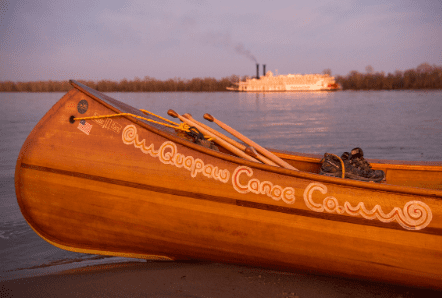
Over the last 20 years, Ruskey has built dozens of big canoes, both dugouts and strippers, each a unique and functional piece of art that now spend their lives working on the Mississippi River through Quapaw Canoe Company, the company he founded and owns in Clarksdale. The company provides guiding and outfitting to the raw wild power and beauty of the Mississippi River. In 2007, 94-year-old Chinook elder and master canoe builder George Lagergren asked Ruskey to renovate two of his traditional Chinook dugouts which are now ceremonially housed in tribal headquarters in Willapa Bay, Washington.
In addition to being a master canoe builder, Ruskey is a musician, writer and painter.
“I am a self-taught artist,” he says. “My mother is a painter, and it’s always been one of her real passions. She couldn’t pursue art the way she would have liked. As a mother, she had to make choices, and she chose to focus on our upbringing. She also sang opera and played the piano. I feel that through my art, I’m carrying on what she started.”
Ruskey’s father also contributed to his love for art.
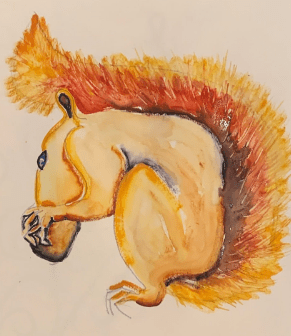
“My father taught me that to understand something, I should sketch it. That way I could learn more about it.”
Ruskey started sketching seriously in the 1990s when he was spending more time on the Mississippi River.
“Initially, it was an attempt for me to understand what was going on around me. I started with ballpoint pens, then pencils, colored pencils, watercolors and finally with oils. My mom painted with oils, and she taught me how to use them.”
Art, for Ruskey, was something that heightened his senses while on the river.
“I love the sparkling light on the water. I spend half my days on the water, and that experience has caused me to see things differently.”
Fascinated by things that don’t necessarily belong together becoming one, Ruskey’s paintings are a study of the unique contrasts, elements and colors he sees on the river.
“It may be a swirl in the water against a landscape of dry, cracked mud,” he says. “Or smokestacks and mud, or a sunrise and a half-mile-long tow boat. The Mississippi River has a strong and direct influence, and that muddy water has an ability to clarify and cause me to see things in a different way.”
As people discovered his art, Ruskey says people started asking him if his work was for sale.
“It was shocking to me to realize that anyone would actually value anything I did.”
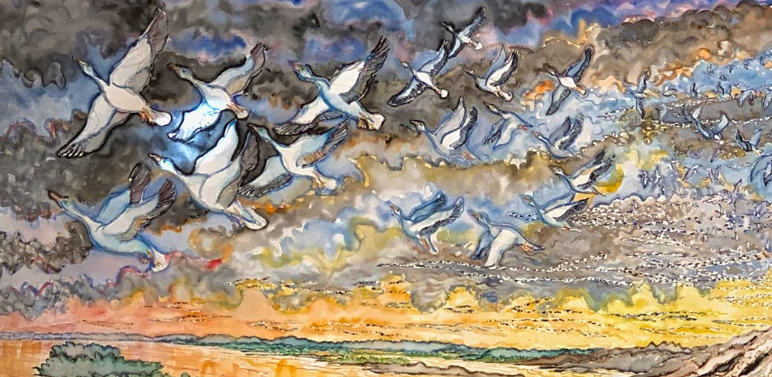
He continued to paint, and over the years, he has had a few shows featuring the artwork inspired by his time spent on the Mississippi River.
“It’s been purely word of mouth,” he says. “It is a different type of tightrope for an artist to walk.”
An artist who has inspired Ruskey in so many ways is Walter Anderson.
“He had the support of his family, and he never lost his spiritual compass. He’s one of my major inspirations of all time.”
Ruskey got a taste of Anderson’s life when he made the trip to Horn Island, a wild and remote Mississippi Barrier Island where Walter Anderson spent time sketching and painting the wildlife and scenery of the Gulf of Mexico. He paddled out with a group of explorers in a 29-foot voyageur-style canoe, a vessel historically designed for use by French fur traders on the open waters of the Great Lakes. The excursion, which lasted for six days, was in conjunction with the Walter Anderson Museum of Art in Ocean Springs.
Another artist who inspires Ruskey is Robin Whitfield, who paints scenes of the Chakchiuma Swamp in the Lee Tartt Nature Preserve in Grenada. Robin paints in the swamp while sitting in her kayak, as well as in her studio, nestled in Grenada’s historic district.
“Robin and I have collaborated on a few things.”
Ruskey maintains a studio across the Sunflower River from Quapaw Canoe Company.
“It’s at 110 Catalpa, in an old house.”
His work is on display in the studio, as well as in Quapaw Canoe Company. His art has become collectible by many influential Deltans, including Mike Wagner, owner of Two Brooks Rice Company in Sumner, who has several of Ruskey’s pieces in his office. While much of his work depicts the flora and fauna on the river, other works include surrealistic maps of the river. His medium of choice is watercolor, naturally, and the colors are vivid and bright, with swirls in the water and sunlight reflecting off the water and trees. John has giclées of his work available for sale as well as original pieces.
Over the years, Ruskey has been recognized for his work and honored by several organizations. In 2017 he was named one of Southern Living’s 2017 Southerners of the Year. In 2019, Ruskey was awarded the Noel Polk Lifetime Achievement Award from the Mississippi Institute of Arts and Letters for his writing, his music, his environmental efforts, his knowledge of Mississippi’s great river and for his work with young Mississippians.

In 1998 he founded the Mighty Quapaws Apprenticeship Program for the youth of the Mississippi Delta, most of whom come from severely distressed neighborhoods. The multi-year apprenticeship includes canoe-building, canoe safety and wilderness leadership and survival. In 2011 he founded the Lower Mississippi River Foundation for access, education, and the betterment of public outdoor recreation on the Middle and Lower Mississippi Rivers.
For more information on John Ruskey’s art, visit the gallery page of his website. Ruskey is also the author of Rivergator, a place to learn about the Mississippi River, with over a million words on the subject. There are photos, Ruskey’s paintings, videos (highly recommended), as well as maps describing the river for paddlers.
